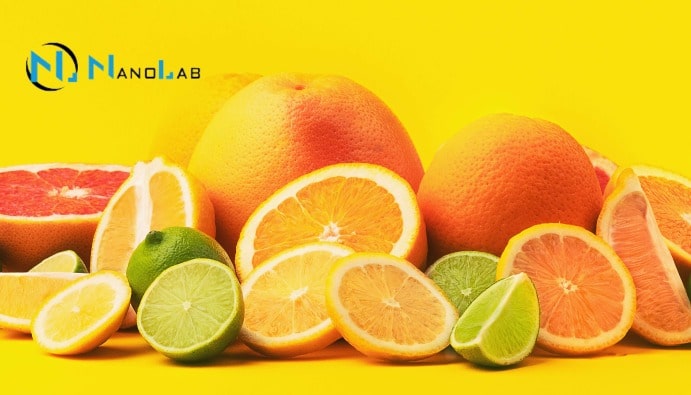Vitamin C Determination: in Foods and Beverages
Why is Ascorbic Acid Determination in Foods?

When foods are purchased or selected, label information is carefully examined. Especially the vitamins and amounts contained in some foods are important in terms of nutrition. Vitamin analyzes should be performed in order for the food to reach the consumer with the correct information.
Vitamin analyzes in foods; It is carried out to determine the vitamin value in foods, to determine the compliance of the food with the legislation, to determine the accuracy of the label information of the food.
What is Vitamin C and Why is it Important?
Vitamin C (ascorbic acid) is a water-soluble vitamin that cannot be stored in the body. It has antioxidant properties and helps protect the body from free radicals. In addition, vitamin C increases iron absorption and plays a role in collagen synthesis, an important protein in the structure of connective tissue. Accurate determination of the amount of vitamin C in foods is of great importance for quality control of foods, accuracy of nutritional values and labeling. Vitamin C determination is essential both to protect consumer health and to ensure that food manufacturers comply with legal regulations.
Vitamin C is an essential vitamin known for its immune system strengthening, skin health and antioxidant properties. Accurately measuring the amount of vitamin C in foods and beverages is very important for evaluating the nutritional value of the product and providing accurate information.
Analysis Methods Used for Vitamin C Determination
While there are a variety of laboratory methods for analyzing vitamin C, each method offers different advantages. The most commonly used vitamin C determination methods in food and beverages are listed below:
- High Performance Liquid Chromatography (HPLC): High Performance Liquid Chromatography (HPLC) is one of the most sensitive and reliable methods for vitamin C analysis. HPLC enables the separation and precise quantification of compounds such as vitamin C. Vitamin C in the sample is analyzed in the HPLC device using special solvents. Vitamin C is detected at a specific wavelength and its amount is measured. It offers high sensitivity and accuracy. In addition, even very small amounts of vitamin C can be measured.
- Titrimetric Methods (Iodometric Titration): The titrimetric method is a widely used method, especially in the food industry. The iodometric titration method is based on the reaction between vitamin C and iodine. The sample is added to the solution and titrated with iodine solution. The amount of vitamin C is calculated by the amount of iodine solution consumed. It is an easy and low-cost method; it gives fast results. However, its sensitivity is not as high as HPLC.
- Spectrophotometric Methods: Spectrophotometric analysis is a method based on light absorption. Vitamin C can be analyzed by absorbing light at specific wavelengths. The sample is added to the solution and the light absorption is measured at a specific wavelength in a spectrophotometer. The results are compared with standard solutions to determine the amount of vitamin C. It is a fast and practical method. However, the results can sometimes be misleading as other substances in the sample may affect light absorption.
- Enzymatic Methods: Enzymatic assays are methods for detecting vitamin C by biochemical reactions. This method allows vitamin C to be analyzed by enzymatic reactions. Vitamin C is oxidized with the help of enzymes and the amount of reaction products is measured. These reaction products are used to determine the amount of vitamin C. It is a specific and sensitive method. However, it is usually used for research purposes due to the cost of enzymes.
- Capillary Electrophoresis (CE): Capillary electrophoresis is a method based on the principle of separating molecules under an electric field. Capillary electrophoresis is particularly effective for the separation of small molecules such as vitamins. As vitamin C passes through the capillary tube under electric current, it is separated into different compounds and detected by the detector. It is fast and effective for analyzing small amounts of compounds. However, it requires expertise and the cost of analysis can be high.
- Iodometer Indicator Method: The iodometer indicator method is based on the reaction between vitamin C and iodine. In this method, vitamin C is determined by measuring iodine with an indicator. Iodine is added to the sample solution and the color change is monitored. The amount of vitamin C is calculated as a result of the color change. It is a practical and fast method. Useful for small-scale analysis, but not as sensitive as HPLC.
Importance of Vitamin C Determination in terms of Legal Regulations
The vitamin C content in food and beverages must be correctly indicated on the nutrition label. This is mandatory for both consumer health and legal requirements. The amount of vitamin C must comply with the Turkish Food Codex and other international legal regulations. Vitamin C determination is especially critical in infant and children's foods, special nutrition products and dietary supplements. Inadequate or incorrect vitamin C content can put consumer health at risk and call into question the reliability of products.
Nanolab Laboratories Group continues to provide services within the scope of Vitamin C Determination. We also provide services in Vitamin A Determination.
Contact us for more information.
You can follow us on LinkedIn for up-to-date news and posts about our services.
Follow our Instagram account to be informed about our latest blog posts.

